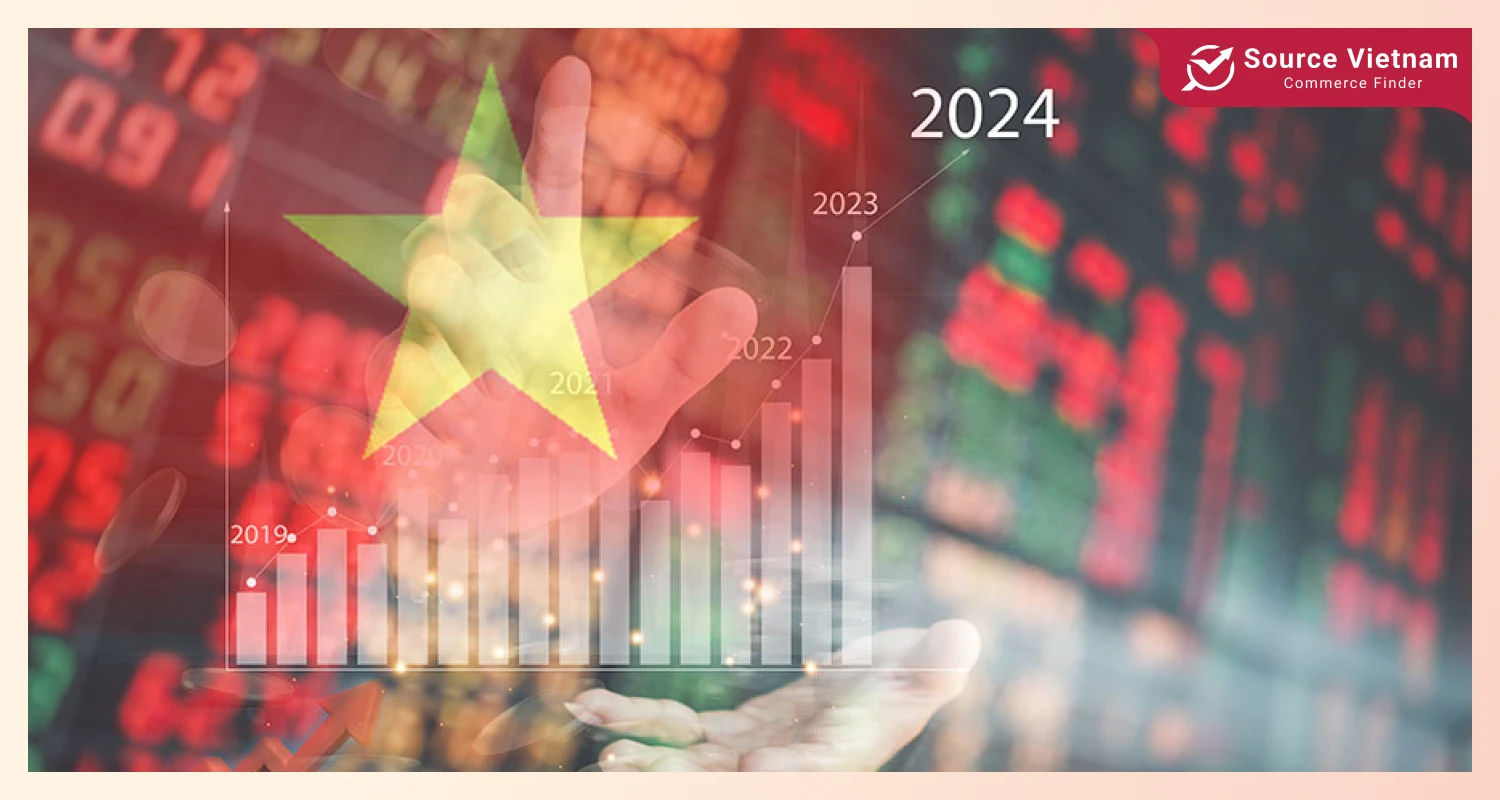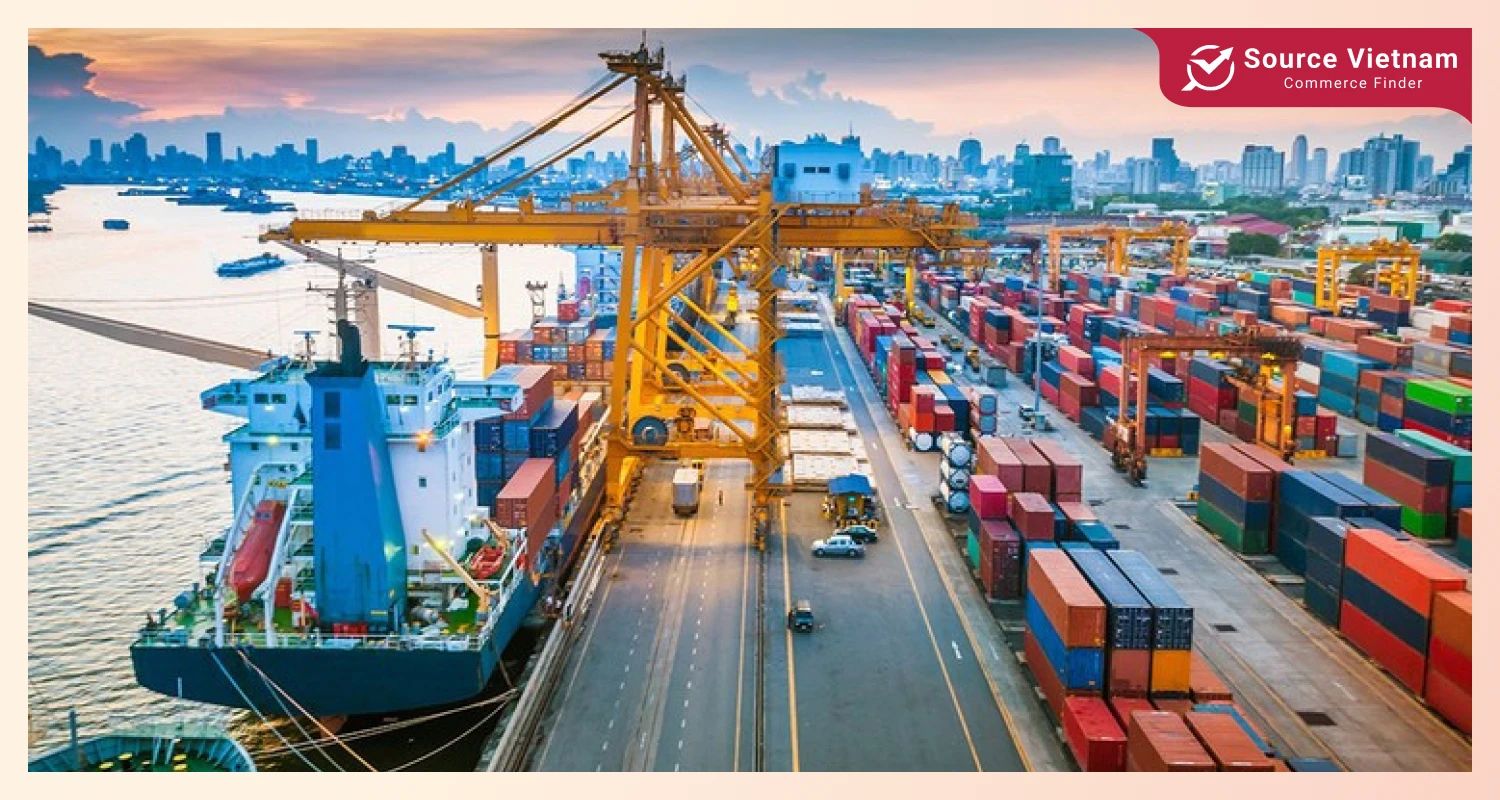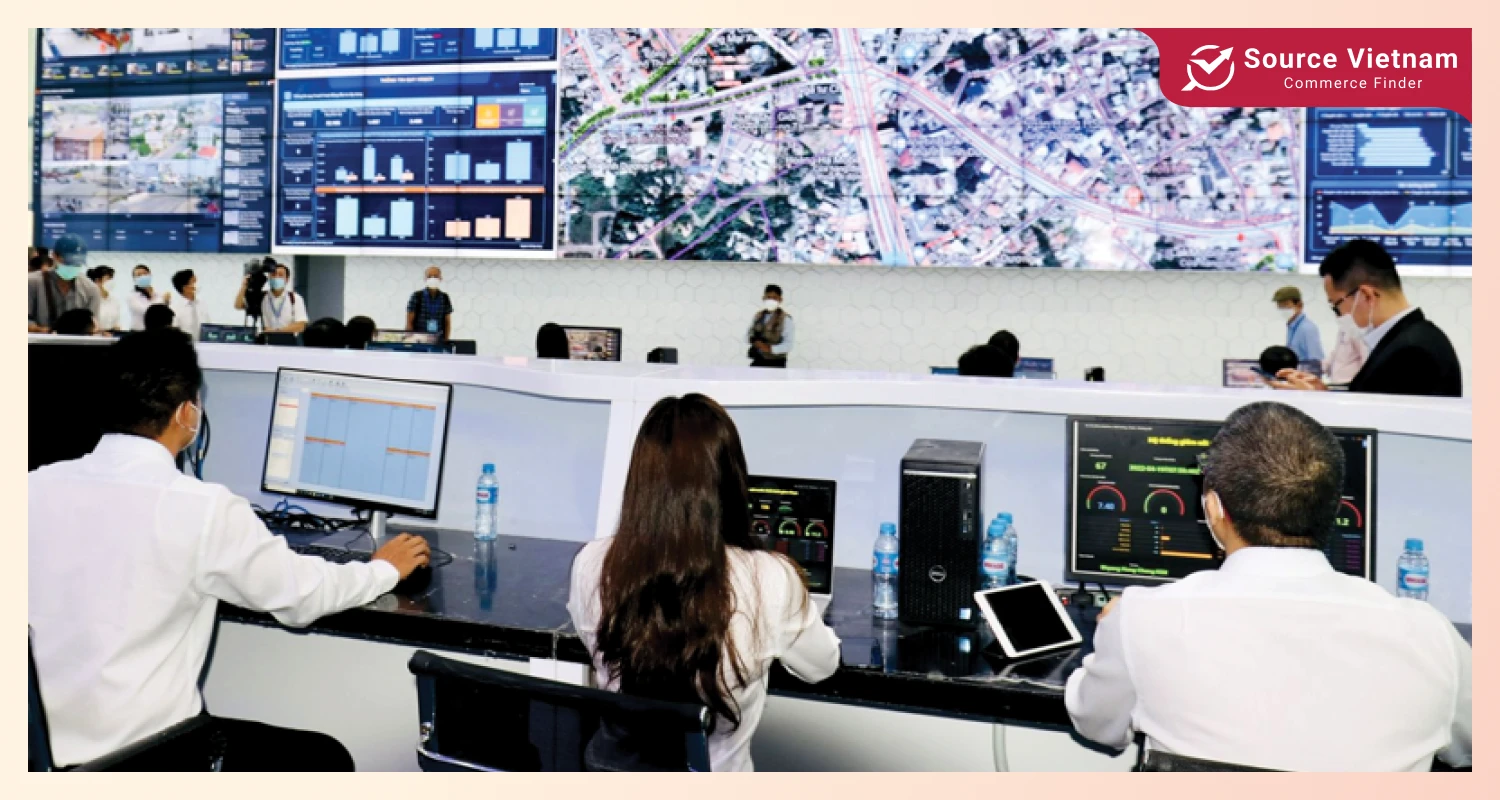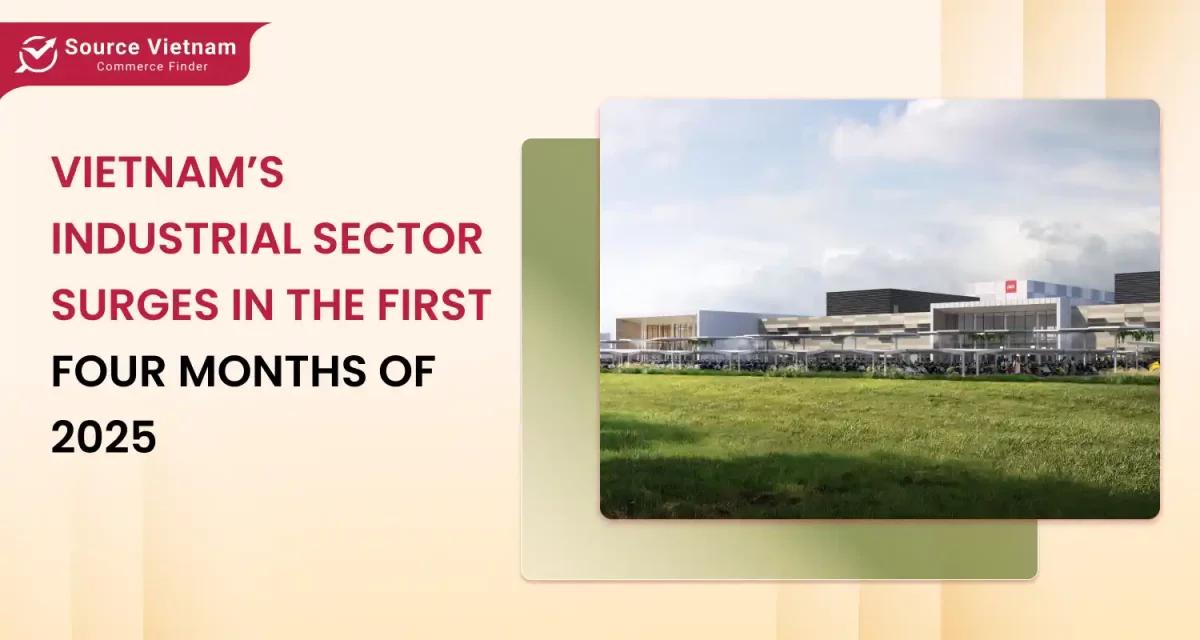Insight:
- Vietnam is experiencing rapid economic growth through technological investment and digital transformation.
- To maintain this, the country must address workforce challenges and invest in sustainable infrastructure and renewable energy.
In recent years, Vietnam has maintained an impressive growth rate, attracting substantial investment in technology and manufacturing. However, the economy must focus on innovation and sustainable development to enhance competitiveness.
Digital transformation and sustainable development have emerged as key growth drivers: optimizing production, attracting investment, and laying the foundation for long-term expansion. These trends not only present significant opportunities for businesses but also position Vietnam as a more modern and environmentally friendly economy in the future.
1. Economic growth and foreign investment
Vietnam has experienced impressive economic growth recently, attracting significant foreign investment in high-tech industries. To sustain this momentum, the government has set an ambitious GDP growth target of at least 8% for 2025, higher than the previous goal of 6.5%-7.0%.

1.1. Foreign investment in high-tech industries
Vietnam is emerging as a prime destination for investors in technology sectors, particularly semiconductor manufacturing and artificial intelligence. Global giants like Intel, Samsung, Qualcomm, and Foxconn have poured billions of dollars into the country’s assembly and production expansion projects. Intel has established its largest chip assembly and testing facility in Vietnam.
Additionally, U.S.-based Amkor Technology is investing $1.6 billion in a new advanced chip packaging plant in Vietnam, partially utilizing equipment relocated from its facilities in China.
1.2. Advantages in the global supply chain
Vietnam has become a crucial link in the global supply chain with its strategic geographic location and pro-business policies. The shift of multinational corporations moving production out of China has created opportunities for Vietnam to attract high-tech investments. Meanwhile, domestic companies like FPT and Viettel are also stepping into the semiconductor industry, further strengthening Vietnam’s position in the global supply network.
1.3. Workforce challenges

Despite abundant opportunities, Vietnam faces a significant challenge: a shortage of skilled labor in high-tech industries. The government has launched the “Semiconductor Industry Workforce Development Program (2023-2050)” to train at least 50,000 professionals with university-level qualifications to support the semiconductor sector.
Additionally, companies like FPT and Viettel are heavily investing in talent development to meet the growing demands of the industry.
In summary, Vietnam strives to achieve high economic growth, attract investment in advanced technology sectors, and tackle workforce challenges. These initiatives will further strengthen the country’s role in the global supply chain.
2. Digital transformation – A key driver of economic growth

2.1. The importance of digital transformation
In the era of Industry 4.0, digital transformation has become a core factor driving productivity and economic growth. Adopting digital technologies in production optimizes processes, enhances labor efficiency, and creates new opportunities for businesses to strengthen their competitiveness and foster innovation.
2.2. Key technology trends
Vietnam prioritizes adopting cutting-edge technologies such as Artificial Intelligence (AI), big data, and the Internet of Things (IoT) in its digital transformation efforts. These technologies improve production efficiency and open doors for sustainable innovation and business growth.
2.3. Enhancing tech infrastructure to attract investment
Developing a robust technological infrastructure is crucial for accelerating digital transformation. The Vietnamese government has introduced policies to build interconnected digital platforms and enable seamless data sharing between organizations. These initiatives are designed to create a more business-friendly environment and attract foreign investment.
2.4. Reforms in the digital sector

To support the digital economy, the government is implementing programs to enhance digital skills in the workforce, ensuring that labor meets the demands of the digital era. Additionally, incentive policies have been introduced to encourage businesses to participate in digital transformation, fostering economic development.
However, ensuring a stable power supply for large manufacturing facilities remains a significant challenge. This requires close collaboration between the government and businesses to invest in sustainable energy infrastructure.
In summary, digital transformation is an inevitable trend and a crucial driver of economic growth and global competitiveness. By leveraging advanced technologies, improving infrastructure, and enhancing workforce skills, Vietnam is positioning itself for long-term success in the digital age.
3. Sustainable development and renewable energy

3.1. Clean energy goals
Vietnam strives to increase the use of renewable energy to reduce its dependence on fossil fuels. Under its new energy development plan, the country aims to generate 16% of its energy from solar power by 2025, a significant jump from the previous target of 5%.
Reducing reliance on coal and natural gas is also a top priority as Vietnam works towards a more sustainable and environmentally friendly energy system.
3.2. Key renewable energy projects
To achieve these goals, Vietnam has launched large-scale renewable energy projects. Numerous solar farms have been developed and operated in the solar sector, boosting the country’s clean energy capacity. Meanwhile, in wind energy, as of July 2022, Vietnam had installed at least 4,000 MW of wind power capacity, supported by the addition of 84 new wind farms.
These projects provide clean energy, create jobs, and drive local economic growth, reinforcing Vietnam’s commitment to a greener and more sustainable future.
3.3. Challenges and solutions

Despite its vast potential, Vietnam’s renewable energy sector faces several challenges, particularly high initial investment costs. However, this also presents a key opportunity to attract foreign direct investment (FDI), as international investors show growing interest in green energy projects.
The government must introduce tax incentives, credit support, and land-use benefits to support businesses in this sector. Additionally, upgrading the national power grid to integrate renewable energy sources efficiently is crucial. Vietnam is also exploring nuclear energy and hydrogen as potential future energy sources to ensure energy security and meet increasing demand.
Sustainable development and the expansion of renewable energy are critical strategies for Vietnam’s future. While challenges remain, government support and active business participation will help the country achieve its clean energy goals, protect the environment, and drive long-term economic growth.
4. Opportunities and challenges for investors

Vietnam is attracting strong investment in information technology, healthcare, and education. The digital transformation boom is driving demand for software and cloud computing, while the healthcare sector is expanding due to increasing medical needs. Additionally, online education is thriving, drawing interest from EdTech startups. Most notably, renewable energy remains a key sector, backed by government support and commitments to reducing carbon emissions.
However, investors must be mindful of changing tax policies and legal regulations, which could impact long-term business plans. Infrastructure and logistics still require improvement, particularly in transportation and the power grid. To mitigate risks, businesses should thoroughly understand legal frameworks and collaborate with local partners to leverage market expertise and ensure smoother operations.
5. Conclusion
Vietnam is entering 2025 with promising economic prospects driven by digital transformation and sustainable development. Strong investments in technology, renewable energy, and supply chains are helping Vietnam maintain high growth rates while attracting quality FDI inflows.
Sectors like IT, healthcare, education, and green energy remain key investor opportunities. While challenges such as regulatory changes and infrastructure gaps still exist, now is the golden time for businesses to capitalize on Vietnam’s dynamic market.
To stay ahead of trends and optimize your investment strategy, follow the SourceVietnam.com blog for the latest policy updates and in-depth analyses!






